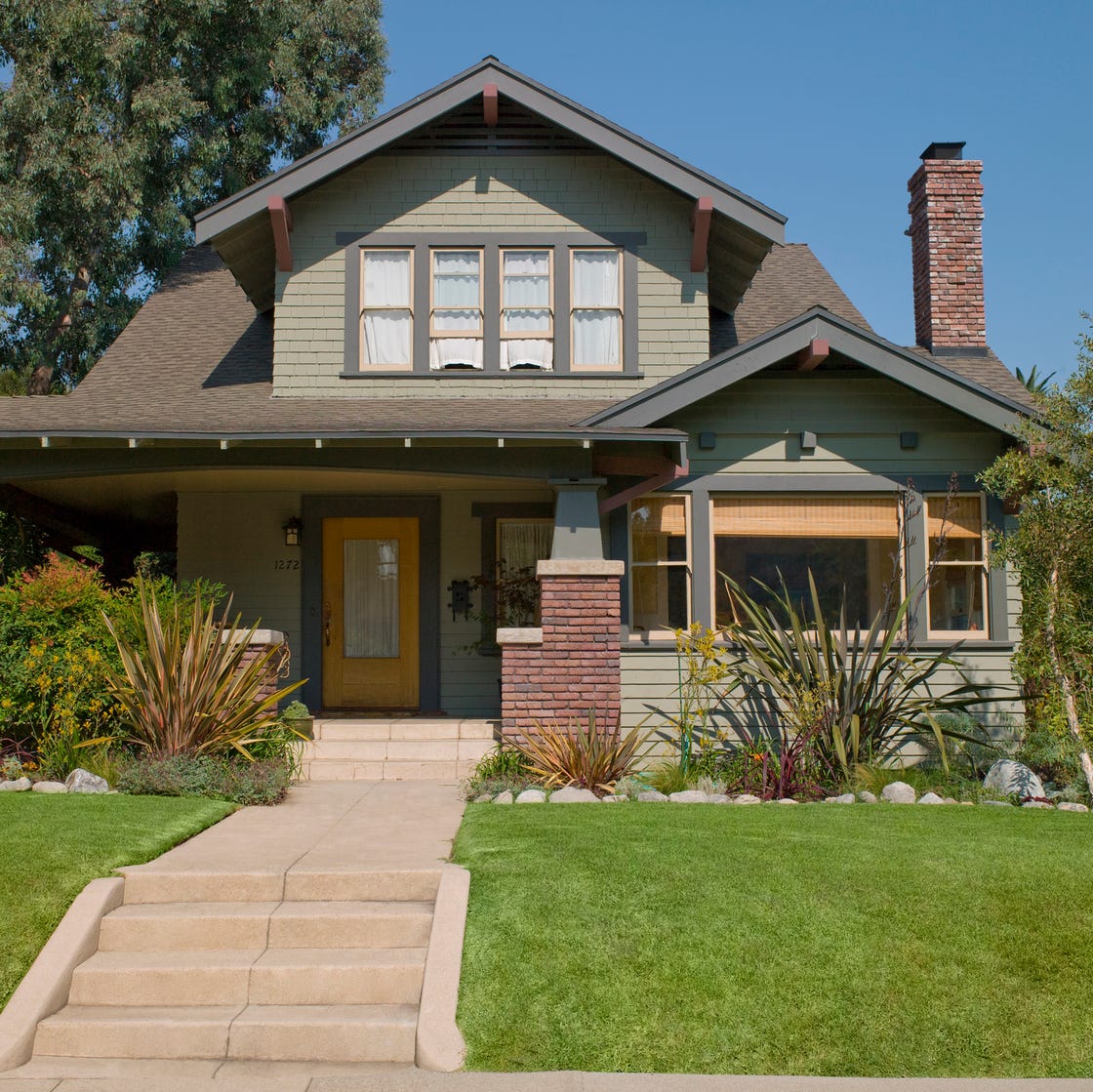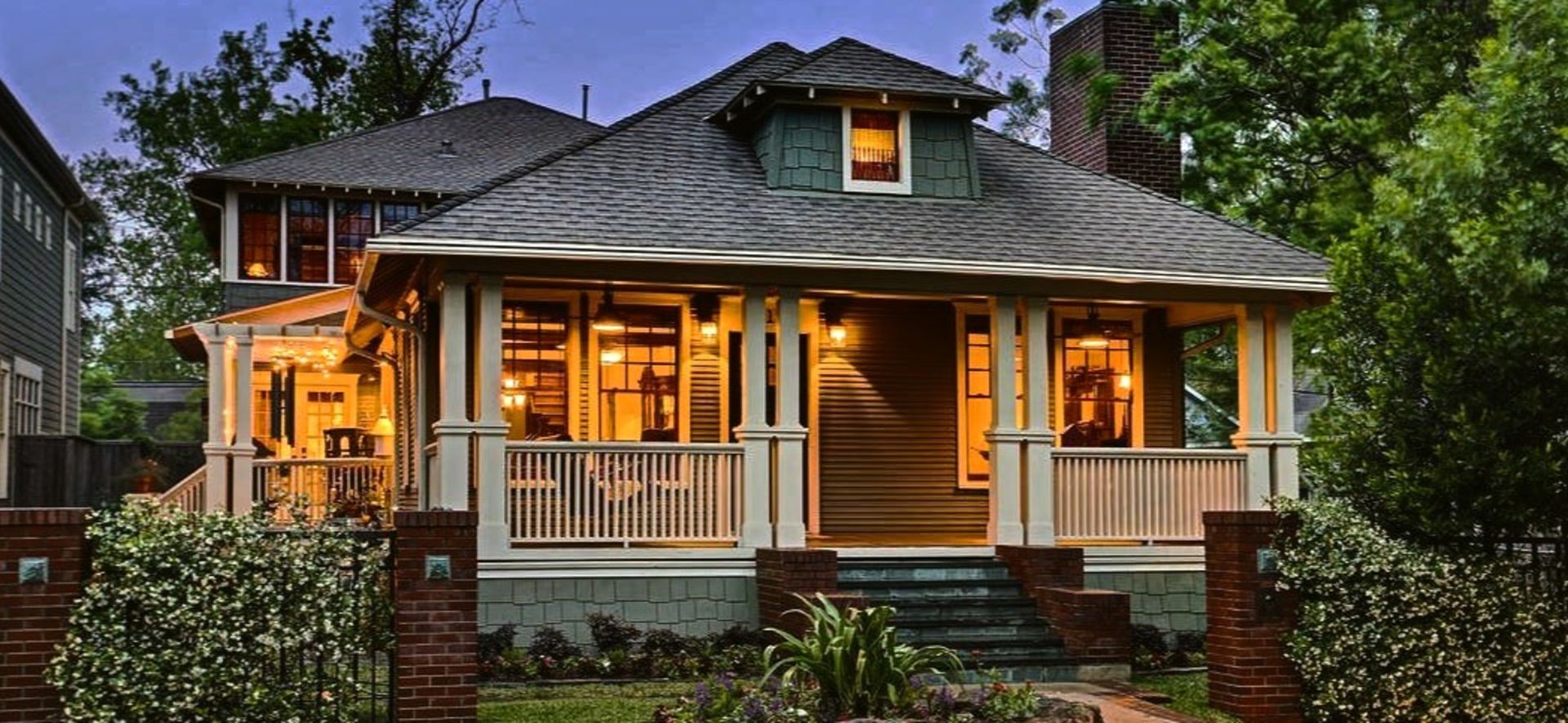Cost Breakdown for Building a craftsman style house Successfully
Wiki Article
The Function of Arts & & Crafts Architects in Elevating Architectural Providers in Residential Design
Arts and Crafts architects considerably affect domestic style with their commitment to craftsmanship and sustainability. They prioritize handmade details and all-natural materials, which enhance both appearances and community identity. By including clients in the layout procedure, these architects develop special living rooms that resonate with individual tastes. This method increases concerns concerning the future trajectory of domestic architecture and its potential influence on neighborhood dynamics. craftsman style house. What exists ahead for this timeless design viewpoint?:max_bytes(150000):strip_icc()/3FraserLivingRoomFireplace-afa2735100754029985d3994bfd422f8.jpg)
The Principles of Arts and Crafts Architecture
The essence of Arts and Crafts architecture lies in its commitment to workmanship and simplicity. This architectural motion emerged in the late 19th century as an action to industrialization, emphasizing the worth of handmade information and natural materials. The concepts of Arts and Crafts architecture prioritize capability and consistency with the environment. Structures commonly include low-pitched roof coverings, large eaves, and exposed rafters, promoting a sense of unity with nature.Artisans played a significant role in this design, commonly incorporating decorative aspects like discolored glass, ceramic tiles, and woodwork, which mirror local workmanship. The color combination often tends to be earthy and suppressed, enabling buildings to blend seamlessly into their environments. In enhancement, the style encourages open floor strategies and common spaces, fostering a feeling of togetherness. Overall, the principles of Arts and Crafts architecture commemorate the charm of simplicity and the significance of human connection to both nature and neighborhood.

Sustainable Practices in Residential Design
While the need for environmentally liable living continues to grow, sustainable techniques in residential layout have actually acquired considerable grip among architects and house owners alike. Architects are increasingly integrating energy-efficient modern technologies and lasting products right into their designs, intending to decrease carbon impacts and improve energy conservation. Methods such as easy solar layout, green roof coverings, and rain harvesting systems are coming to be common parts of contemporary household architecture.Furthermore, the choice of locally sourced materials minimizes transport exhausts and supports regional economic situations. Focus on all-natural light and ventilation not only enhances interior air high quality however additionally lowers reliance on man-made lights and climate control systems. These sustainable practices reflect a dedication to preserving the setting while offering home owners with comfortable, effective home. As understanding of ecological issues grows, the integration of sustainability in property layout is poised to end up being a specifying characteristic of modern architecture, guided by the principles established by Arts and Crafts architects.
Modification and Customization in Home Design
Customization and customization in home design have emerged as key patterns in response to the growing desire for unique living environments that mirror specific preferences and way of lives. Property owners significantly seek to tailor rooms that resonate with their individualities, causing a more significant connection with their space. craftsman style house. This activity urges architects to engage clients in the style process, promoting collaboration that assures the final outcome personifies the home owner's visionAspects such as bespoke designs, custom products, and customized surfaces permit a diverse range of expressions in domestic layout. Arts and Crafts architects play a pivotal function in this evolution, stressing craftsmanship and high quality. Their concentrate on integrating creative components with performance warranties that each home is not only aesthetically pleasing yet likewise distinctively matched to the inhabitants' demands. As a result, this emphasis on Read Full Article personalization boosts the overall property experience, developing rooms that are both individual and enduring.

The Impact of Arts and Crafts Architects on Community Appearances
As areas progress, the impact of Arts and Crafts architects considerably forms their aesthetic landscape. By stressing handmade details, natural materials, and typical construction strategies, these architects produce homes that resonate with their surroundings. Their layouts typically integrate local plants, structures, and colors, cultivating a sense of harmony in between constructed atmospheres and nature.The Arts and Crafts movement advertises neighborhood identity through building connection. By encouraging company website home owners to adopt similar design concepts, neighborhoods create a cohesive character that enhances aesthetic appeal. This architectural uniformity not just enhances the visual experience but also imparts a sense of pride among residents.
Furthermore, the concentrate on sustainability and workmanship in Arts and Crafts architecture straightens with modern values, making these layouts appropriate in contemporary setups. Ultimately, Arts and Crafts architects contribute considerably to the overall beauty and cultural stability of neighborhoods, leaving a lasting influence on their aesthetic heritage.

Future Trends in Arts and Crafts Architecture
With a raising focus on sustainability and customization, future trends in Arts and Crafts architecture are poised to blend standard craftsmanship with modern-day advancement - craftsman style house. Architects are likely to focus on environmentally friendly materials, using reclaimed timber and natural stone to boost the sustainability of domestic layouts. The integration of clever home innovation will come to be commonplace, allowing for individualized living experiences without jeopardizing aesthetic honestyThe rebirth of artisanal techniques will certainly cultivate a restored recognition for handmade elements, such as bespoke kitchen cabinetry and custom-made floor tile job. Future styles might also mirror an emphasis on community-oriented spaces, motivating communication and link amongst citizens. Outdoor living areas will acquire prestige, flawlessly incorporating nature into the home environment. As Arts and Crafts architecture advances, it will certainly continue to honor its origins while adjusting to modern requirements, producing harmonious areas that reflect private values and way of lives.
Regularly Asked Inquiries
about hisWhat Motivated the Arts and Crafts Activity in Architecture?
The Arts and Crafts activity in architecture was inspired by a reaction against industrialization, highlighting handmade quality, all-natural materials, and a go back to typical craftsmanship, intending to create unified, useful areas that celebrated virtuosity and originality.Just how Do Arts and Crafts Architects Collaborate With Clients?
Arts and crafts architects work together with clients with open discussion, focusing on individual demands and aesthetics. They emphasize workmanship and sustainability, cultivating a collaboration that incorporates the client's vision with the engineer's proficiency in style and products.What Materials Are Generally Used in Arts and Crafts Houses?
Typical materials in Arts and Crafts homes consist of all-natural wood, stone, and block, emphasizing workmanship and natural looks. These elements create a cozy, welcoming atmosphere, showing the movement's devotion to high quality and simplicity in layout.Exactly how Do Arts and Crafts Designs Enhance Indoor Living Rooms?
Arts and Crafts styles improve interior living areas by promoting natural light, open floor plans, and handcrafted details. These components promote a warm, welcoming ambience, urging a connection between homeowners and their atmospheres via thoughtful, functional visual appeals.What Are Some Famous Examples of Arts and Crafts Architecture?
Famous examples of Arts and Crafts architecture include the Gamble House, Greene and Greene's work of art in California, and the Robie House by Frank Lloyd Wright. These structures display handcrafted details and consistency with nature, specifying the motion's essence.Report this wiki page